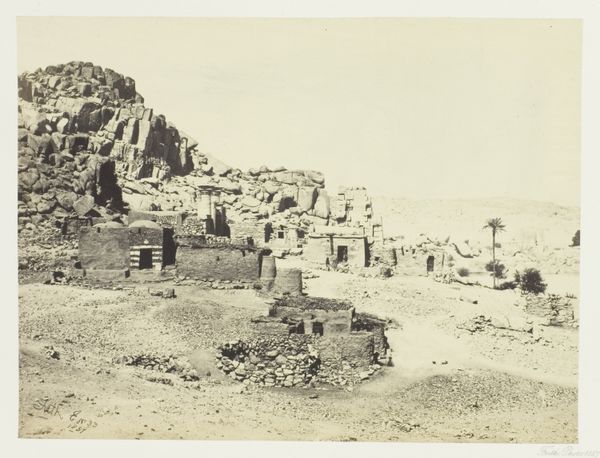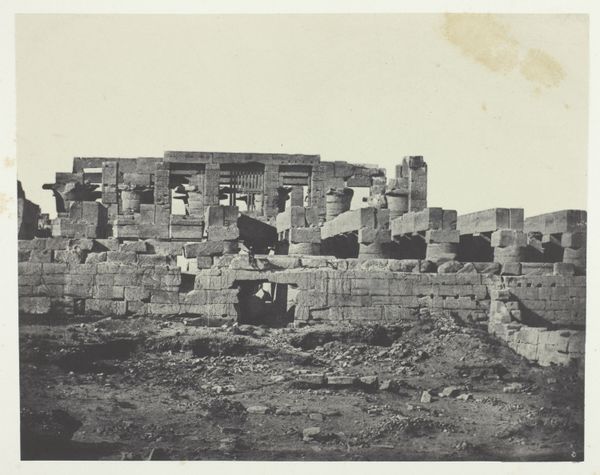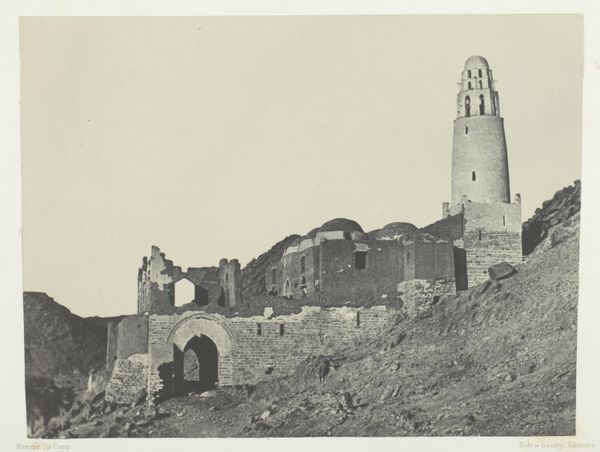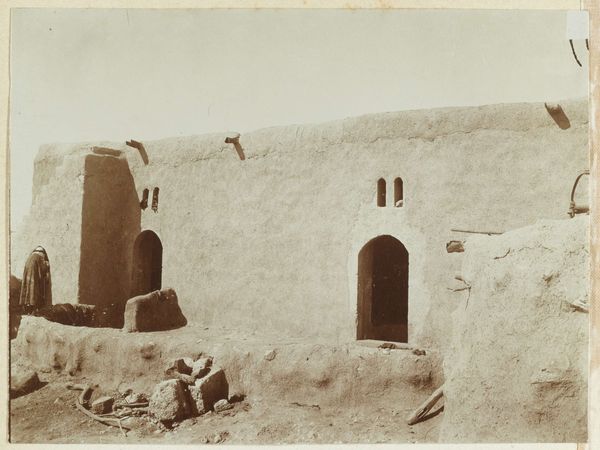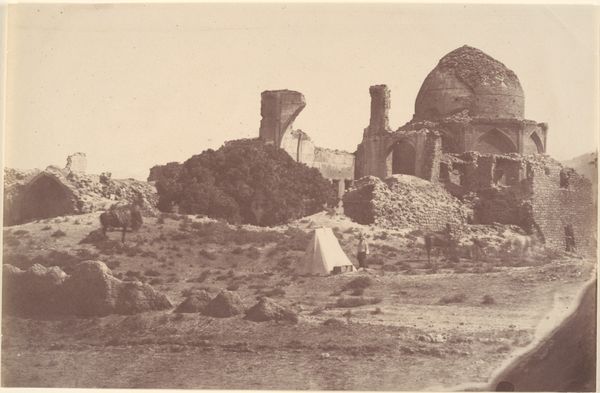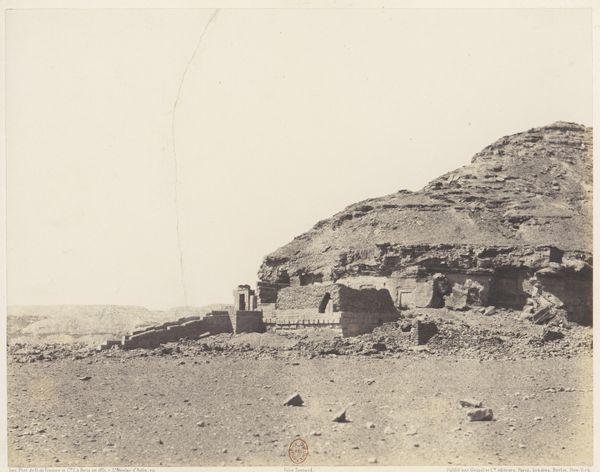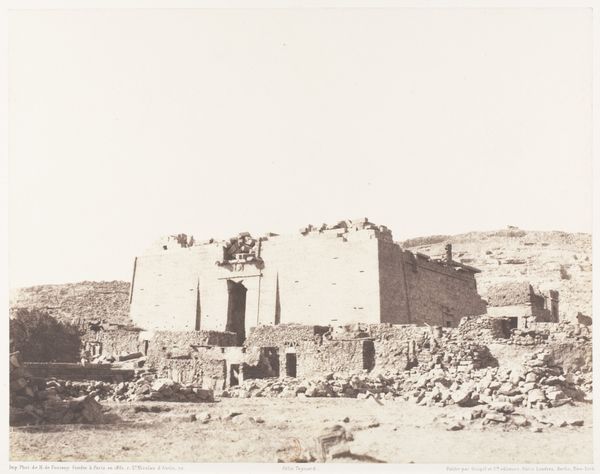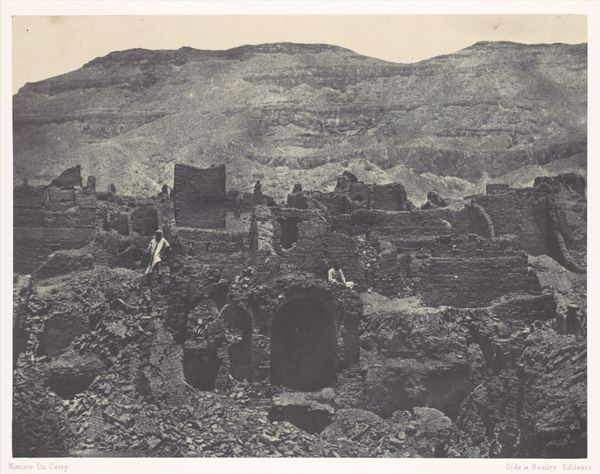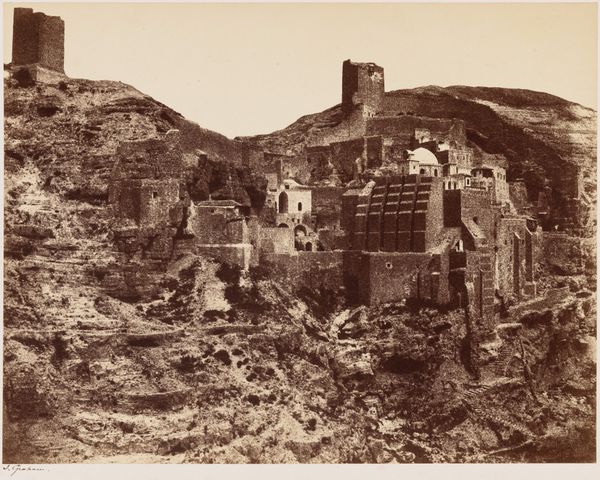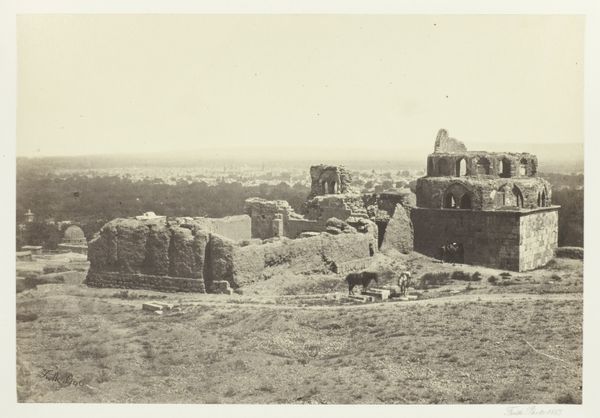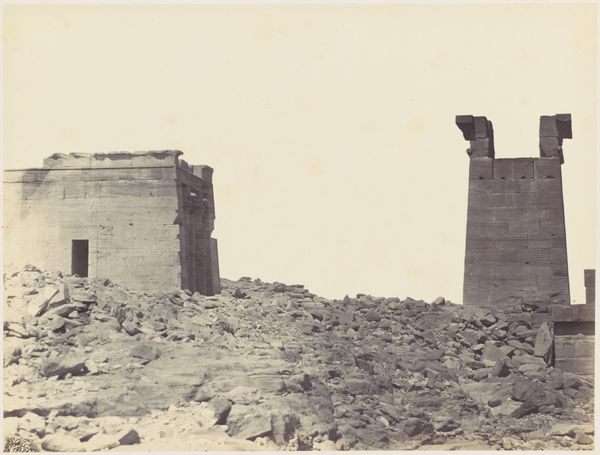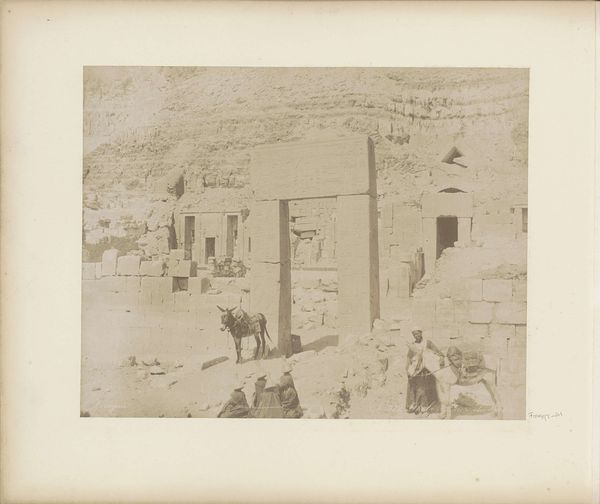
silver, print, etching, plein-air, daguerreotype, photography, gelatin-silver-print, albumen-print
#
16_19th-century
#
silver
# print
#
etching
#
plein-air
#
landscape
#
daguerreotype
#
outdoor photo
#
photography
#
england
#
orientalism
#
gelatin-silver-print
#
cityscape
#
islamic-art
#
albumen-print
Dimensions: 15.9 × 22.4 cm (image/paper); 29.6 × 42.7 cm (album paper)
Copyright: Public Domain
Editor: So, here we have Francis Frith’s "Doum Palm and Ruined Mosque, Philae" from 1857, a silver albumen print. It really strikes me how the ruined mosque seems to blend right into the rocky hillside. What's your interpretation of this work, especially in terms of its historical context? Curator: It's a striking image, isn't it? Frith was one of many European photographers who ventured to the Middle East in the 19th century. This image operates within a colonial gaze, where ancient cultures and landscapes were exoticized and presented as ‘discovered’ for a European audience. How do you think this photograph participated in constructing a particular narrative about Egypt and its history? Editor: That's fascinating! I hadn't really thought about it in terms of a constructed narrative. It almost feels romantic, this idea of a lost civilization, but filtered through a very specific viewpoint. Does the "ruin" itself serve a purpose in this narrative? Curator: Absolutely. The state of decay becomes a powerful visual trope. Think about how ruins, even then, served to reinforce a sense of European progress and modernity by contrasting it with the ‘decline’ of other civilizations. Frith wasn’t simply documenting; he was participating in a larger discourse about power, culture, and the "Orient". The photograph became a tool. Editor: So the intended audience and the photographer's background play a significant role. Is there any commentary on this photograph during Frith’s era? Curator: Reviews at the time were likely to focus on the picturesque qualities and the photographer’s technical skill, without deeply interrogating the socio-political implications. We've since gained critical tools for examining those underlying power dynamics. Editor: It’s eye-opening to consider the layers of meaning beyond the immediate image. I’ll definitely be looking at Orientalist art with a more critical eye from now on. Curator: Exactly! That's the key – to continuously question the context and consider whose story is being told, and why. It reshapes our understanding.
Comments
No comments
Be the first to comment and join the conversation on the ultimate creative platform.

